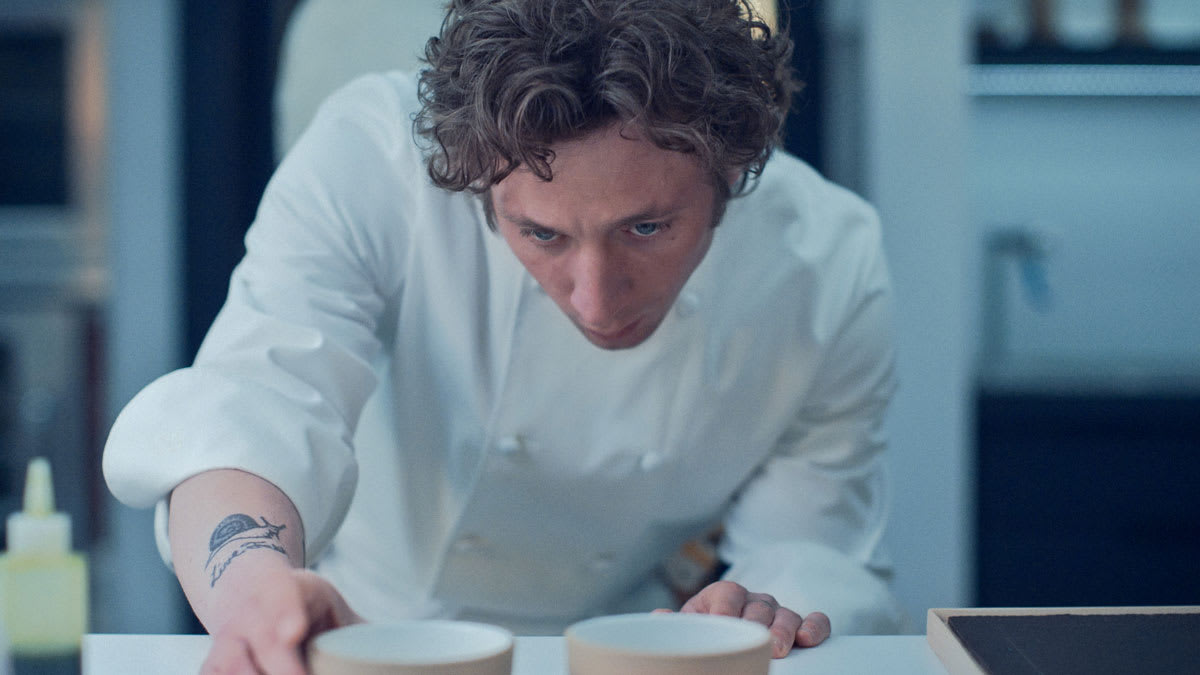“The Bear’s” most profound gear-related story arc starts in the pilot, when the central character, Carmy, misplaces his knife.
He searches frantically for the hand-forged gyuto—a Japanese chef’s knife—assuming that someone is hiding it as a way to haze the new guy. (It had actually fallen on the floor.) Carmy has just taken the helm at his late brother’s Italian beef sandwich shop. The knife, a vestige from his markedly different prior gig as Chef de Cuisine at an Eleven Madison Park–like culinary oasis, is a serious piece of steel. It’s a 240mm (roughly 9.5-inch) hand-forged work of art, made by bladesmith Yoshimi Kato in Japan’s legendary Takefu Knife Village.
The knife is highlighted throughout the Emmy-winning series, perhaps most notably in the three-Kleenex moment when Carmy gifts it to sous chef Tina Marrero as she enrolls in culinary school to refine her skills.
The knife was so gorgeous and effective that I began hunting one down. In no small part because of the show’s popularity, most of the places I looked were sold out. But after trying it at a Manhattan cutlery shop, I bought one two years ago.
Then, it was just over $300. Now, it’s up to $380. Expensive? Yes. Worth it, for a tool I use every single day and plan to pass on to my kids? Yes, again. It’s the kind of move that Lomonaco would endorse for a home chef. “I recommend a couple of pro-quality knives,” he says. You don’t need a whole set of them, and they’ll literally last a lifetime if they’re taken care of.”
How does the knife perform? In a word: “Wow.” That’s what CR’s Hope said when I handed him my knife and invited him to slice and chop a red onion. My knife, which differs from Carmy’s (rosewood vs cherry handle; mine is 210mm while Carmy’s is 240mm), feels like an extension of my hand. While it’s quite long, it’s surprisingly nimble. It can do anything from a delicate brunoise of vegetables to filleting a fish for sushi. The blade is so blazingly sharp that with a little practice, I found I could cut a carrot so thinly that it was actually translucent.
More to the point, a knife this good makes cutting a pleasure. I’ve literally found myself pausing “Top Chef” and sneaking downstairs to cut an onion with this knife, just for the fun of it.
Shortcomings: This gyuto is a high-performance tool. Imagine a Porsche for your knife block. But like a Porsche, it needs to be treated with care. The super-hard carbon steel takes a razor-sharp edge, but it can be chipped if you twist or scrape the blade on a cutting board. It can also be damaged by cutting hard foods, like meat with bones or Parmesan cheese rinds. In “The Bear,” we see the chefs grabbing more rugged knives, like a stainless steel gyuto from MAC, for heavy-duty tasks.
Even when used properly, the Kato also needs attention. That carbon steel blade must be wiped even after cutting a bunch of onions, or it will develop dark stains and eventually rust. And it needs to be washed immediately after use and kept dry in either a wooden saya blade protector or some other secure knife holder. Don’t even let this knife look at your dishwasher.
While the Kato holds an edge very well, and can be touched up nicely on a leather strop, you really need to sharpen it on a whetstone, like the Sharp Pebble model that our testers liked, instead of a mechanical knife sharpener.
Alternatives: The favorite in our recent evaluation of chef’s knives, the Henckels Premio 8” Chef’s Knife, isn’t nearly as sexy or as fun to cut with as the Kato gyuto. That said, the Henckels will probably be a more congenial partner for many home cooks. It can also serve as a solid utility knife for heavier work or to hand to a guest with more enthusiasm than knife skills who’s helping you to prep. It slices cleanly, if not quite as precisely as that Japanese steel, and its handle is easy to grip with a nice balance. Plus, it doesn’t really require special handling. More to the point, it’s only $40.
Source link
